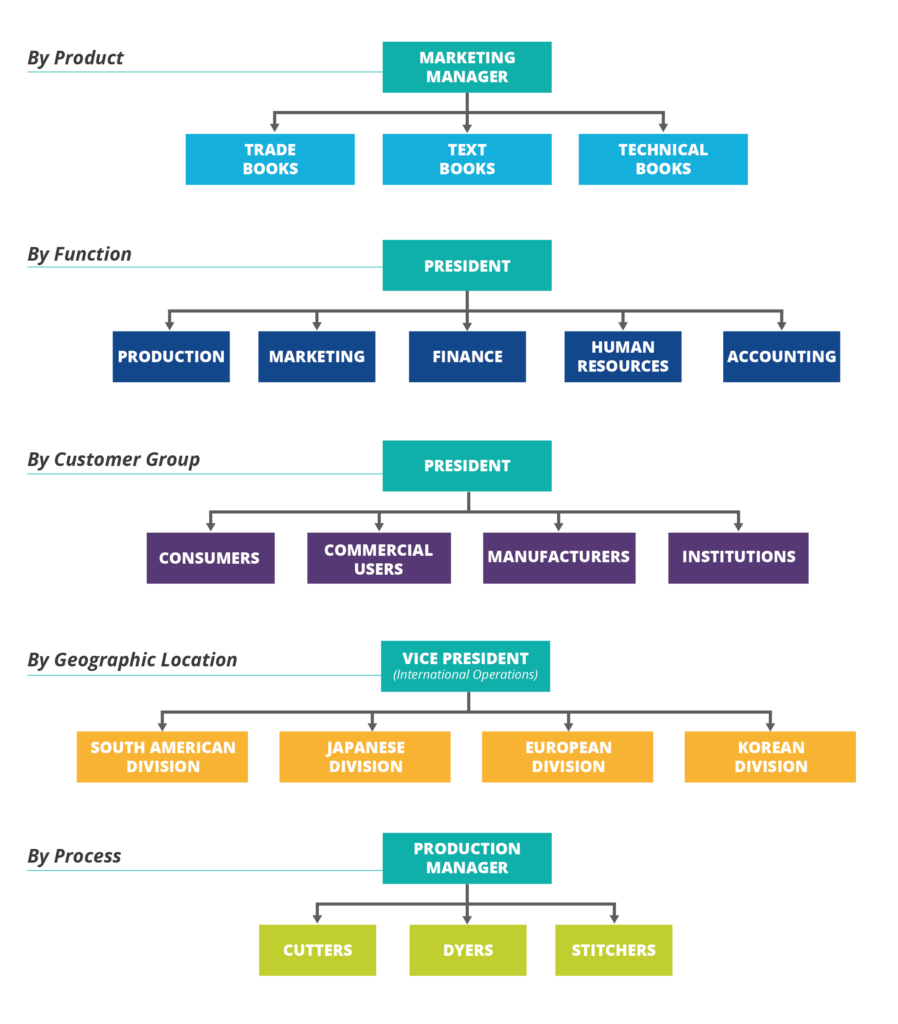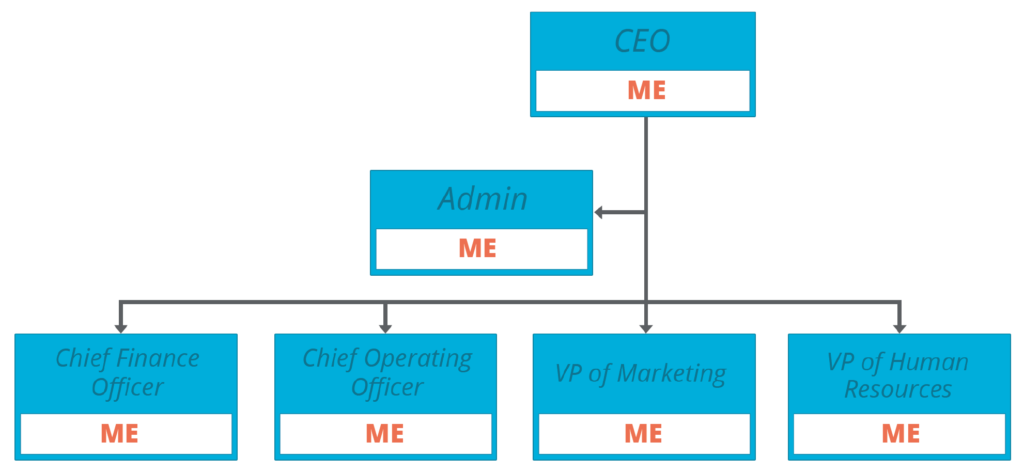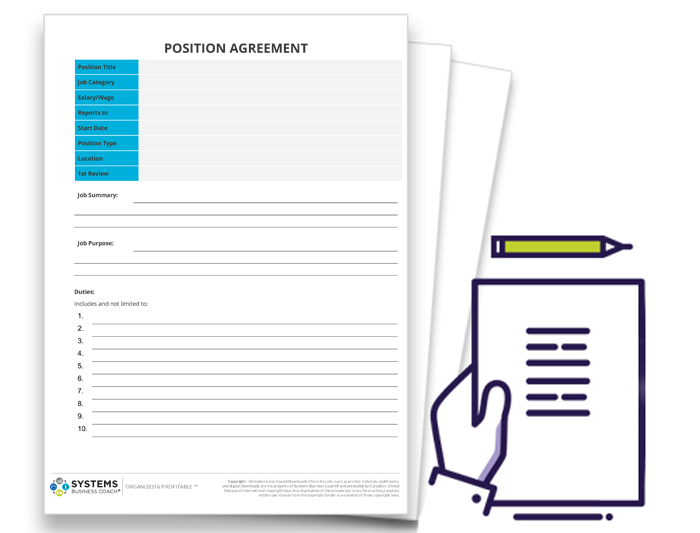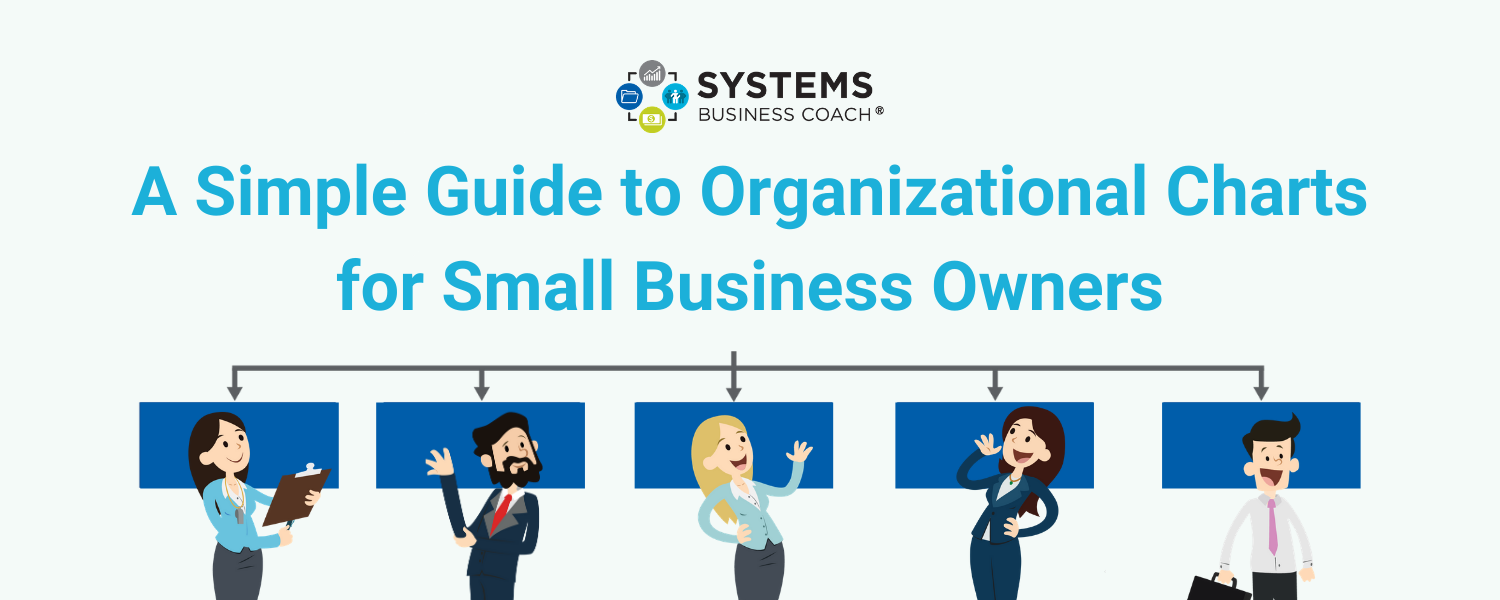*** FREE Bonus Resource: Position Agreement Template***
Like most small business owners, you probably got into business for greater prosperity and freedom, not to simply create a job for yourself.
Yet you find yourself doing everything in the company. And if you step away for a second it all falls apart.
Sound familiar?
Without planning on it, you’ve become your hardest-working and most underpaid employee!
But it doesn’t have to be that way.
By using an organizational chart, you can start to delegate tasks confidently and free up time for you to do the work you want.
What’s the purpose of an organizational chart?
An organizational chart visually represents your current company positions. An organizational chart’s purpose is to close the gap in accountability between you and your employees.
Setting up your organizational chart for success.
Whenever I get a new tool, I want it to help me with my work, not create more work for me. (Which has happened before!) To optimize your organizational chart, you can follow these steps:
- Choose how you want to organize your chart.
- Identify all positions in your company.
- Name and assign positions.
- Use a position agreement.
1. Choose how you want to organize your chart.
An organizational chart is a visual representation of how the positions in your company connect. It’s common to organize these connections into different groups.
You can group your chart by:
- Product
- Function
- Customer group
- Geographic location
- Process
- Departments
How you organize your position depends on your business operations.
For example, a tour-guide company might choose to organize their chart by location. While a company that produces computers might choose to organize by process. There are the people who make the physical computers and then the employees who program the computer.
Here’s a few examples of what your organizational chart could look like:

2. Identifying all positions in your company
A common question I hear from small business owners is: What positions belong on my organizational chart?
All of them! It is important to list literally everyone on your team. Such as:
- Bookkeeper
- Customer service agents
- Photographer
- Server
- Janitor
- Coach
- Trainer
- Your lawyer
- Your accountant
- Anyone else who supports your company.
Every business needs an organizational chart— no matter how small. (Yes, even you, solopreneur!)
Once you have all your jobs organize them into their corresponding group!
2.5 Identifying your workload.
Yes, I snuck in an extra step here! But it’s worth it!
When I create these charts with small business owners, they don’t realize how many positions they are juggling!
What sounds like,” I’m the owner” is actually, “I’m the owner, head of sales, the general manager, administrator, bookkeeper, and part-time janitor.”

If this is you, I suggest taking some time and identifying all the jobs you do! Right down to sweeping the floors.
Identifying your workload is the first step to organizing it, and eventually delegating it!
Once you have a list of all the positions you do, separate them into two categories:
- Your strategic work as an owner— the long-term planning and strategy to lead or grow your business.
- The tactical work as an employee— urgent daily tasks that make or deliver your product.
As the leader of your organization, you want to be doing at least some strategic work! You may love the tactical work more, just be aware of of how it can suck up your time and take away from your ability to grow and strengthen your business. (Common small business trap)
3. Name and assign positions
The next step is to give a title to each position and identify who is responsible for it.
Now, you may notice your name is on every job.
That’s okay! Step-by-strategic step, you can build this so that you are only doing the jobs that you love or have the highest contribution to the company.

Having all positions documented will help organize and prioritize your time. Plus, you can identify positions to delegate or decide who is the best next hire.
Work towards finding people who can do these jobs better or for less money than you can.
The purpose of your organizational chart is to free up your time by outlining where to delegate and who to hire. It’s the map to your entrepreneurial freedom!
4. Using a Position Agreement
Now, it’s great we know the purpose of an organizational chart, but how do we actually get there? How do we delegate the right tasks and find the right people?
To accurately hire or delegate, you need to clearly outline the tasks, authorities and responsibilities of each position.
You can do this by creating a position agreement.
According to the Society for Human Resource Management, a job description (one of the main parts of a position agreement) is a useful communication tool.* With it, you can give clear instructions and outline your expectations. Which sets up your employees to successfully do their job the way you want it to be done.
By documenting everyone’s tasks and responsibilities, you turn your organizational chart into an effective hiring and delegating system.
When a system is documented, you understand exactly how it works and therefore can adjust it to get the results you want. Whether that’s more free time, your employees becoming autonomous or your business running without you there.
So, let’s do it! Write a position agreement for each job on your organizational chart.
Here’s a FREE position agreement template to get started.

What’s your thoughts?
Clearly define and assign every position on your team. Then you apply your new system to confidently delegate tasks or hire someone new! Start using your organizational chart for its true purpose— freedom and prosperity!
Which position are you excited to spend more time on? Which ones are you happy to give away?
Let me know your thoughts in the comments!
Until next time, enjoy your Entrepreneurial Journey!

Share with like-minded business owners!
Sources
*Brannen, D. A. (2016, February 17). Why You Should Have Job Descriptions. Society for Human Resource Management. https://www.shrm.org/ResourcesAndTools/hr-topics/talent-acquisition/Pages/Why-You-Should-Have-Job-Descriptions.aspx











